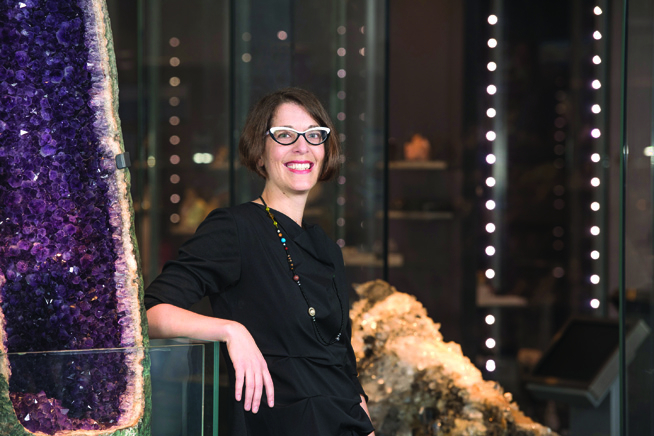Profile: Marianne Mader

New on the Ground (and in Space)
The ROM’s Marianne Mader discusses her inspirations and what’s next for her.
What made you pursue planetary science as a study?
I’ve met numerous scientists who’ve known from a young age that they wanted to pursue a certain field. For me it was more of a gradual process. I’m of the Star Trek generation— my initial attraction to the field of space exploration was this science fiction series that is all about the human connection and human exploration of cultures. Growing up I didn’t think of a career in space exploration. Besides the job of “astronaut” I wasn’t aware of other opportunities. I didn’t have my definitive “eureka” moment until my mid-20s. Prior to that, I had pursued academic paths that enabled my love of the outdoors and exploration. I knew I was hooked on space science during one of the lectures in the MSc space studies program at the International Space University.
Who was speaking at that class?
Japanese astronaut Chiaki Mukai was discussing human space exploration and group dynamics working in isolated remote environments—topics that I find captivating—and I was hooked. I was fascinated by the human connection in these fields and how we can work together in difficult environments to make something happen. I went on to study human- and robotic-simulated space missions as part of my PhD research.
If you could travel back in time, where would you go?
Part of my research background is studying very old rocks—older than 2.5 billion years. An interesting aspect of studying old rocks is that they essentially give you a window into the past by interpreting the rock record. There are a lot of questions about the conditions on Earth around four billion years ago. It would be amazing to go back to that time! We could interpret what the environment was like when life started on Earth and the kinds of life we would expect to find. It would be amazing to travel with our lab equipment because what we do now, billions of years later, is make these interpretations based on a kind of historical CSI.
What should places like the ROM be doing to foster the public’s interest in the origin of life on Earth and the exploration of life on other planets?
The ROM offers tremendous opportunities to engage the public in these topics. One opportunity is through the forthcoming gallery that tells the story of life on Earth and its evolution. You could think of it as the “missing link” between the Teck Suite of Galleries: Earth’s Treasures and the James and Louise Temerty Galleries of the Age of Dinosaurs on the second floor of the ROM. We’re currently fundraising for the future Dawn of Life Gallery that will showcase key fossils throughout the Earth’s history, highlighting how life diversified over time and faced major crises. Some of these organisms, like samples from the Burgess Shale in British Columbia, are strange by today’s standards, and their soft bodies are preserved in remarkable fossils more than half a billion years old. I also value approaches that incorporate interests of different target audiences with the topic matter. Jean-Bernard Caron, our Curator of Invertebrate Palaeontology, works extensively on Burgess Shale fossils, which have inspired an anime series and manga book in Japan! Here’s a community that accesses the ROM’s research in a completely different way than we traditionally would. I love that their reconstruction is presented in a pop-culture setting, and at the same time the public can access the ROM’s latest research.
Originally published in the Spring 2016 edition of the ROM Magazine.
